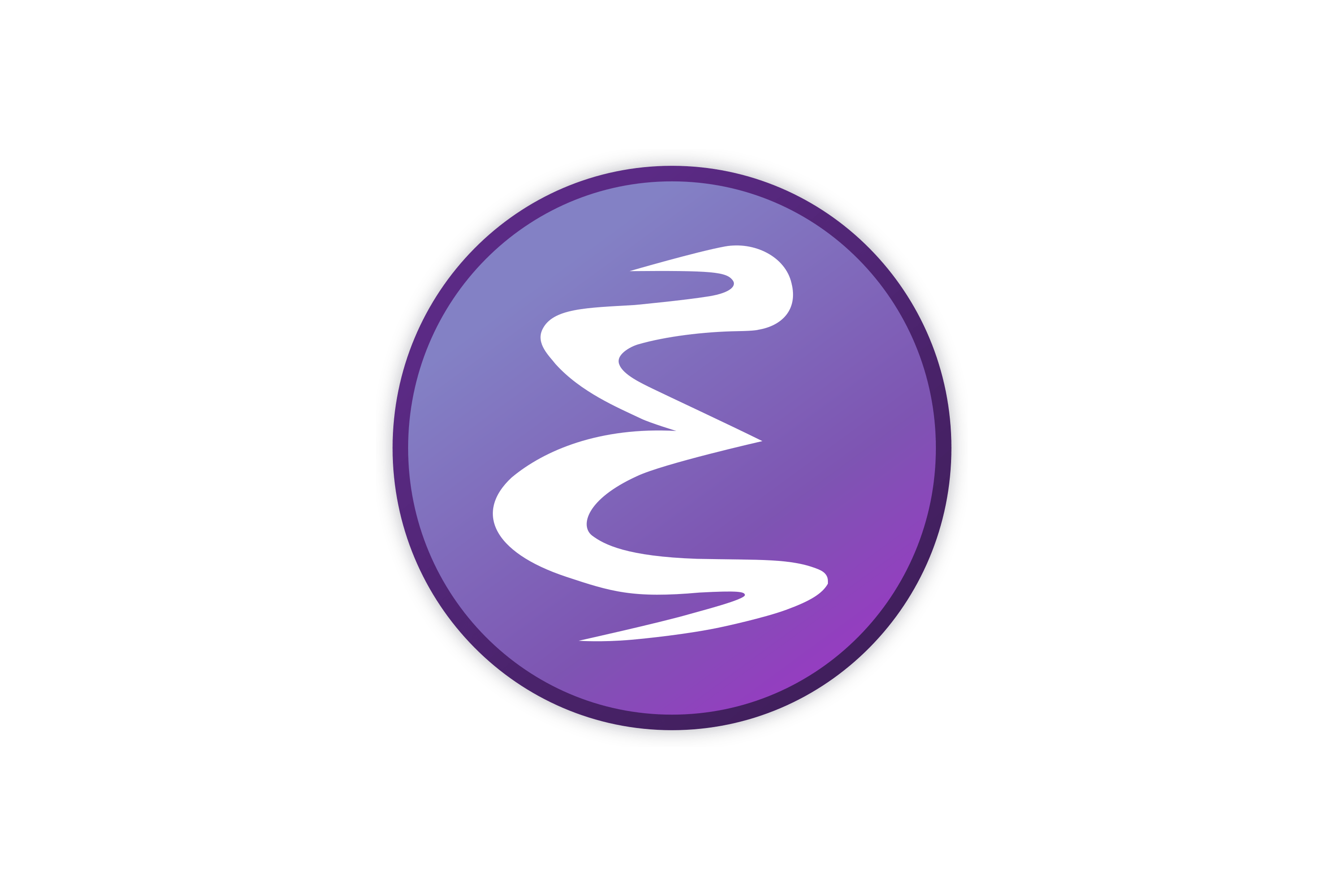Ever had a question about Linux but felt too afraid to ask? Well now’s your chance, ask any question about Linux, no matter how noob or repeated it is, and I and others will help answer them.
Previous noob question thread: https://lemmy.ml/post/14261893
I’m always too afraid to ask… Is this year finally the year of Desktop Linux? Is next year the year of Mobile Linux?
trolololo.jpg
I kid, this year has been the year of Desktop Linux for well over two decades for me. Obviously! And I think this megathread is great idea :)
Year of mobile linux
[ astronauts meme ]
Always has been
What is something Linux related that you’ve learned recently?
As a meta question, could this work as an additional (or alternate) recurring discussion question? It felt similar in intent, to encourage people to keep learning / asking questions and chances are that if someone learned something then others will benefit from the information (or correct them)
I learned how a kernel actually loads a program and switches between them by using timer interrupts and interrupt vectors that point to specific locations in memory to resume execution from. Not specifically Linux related, but I’m trying to learn more computer science, and it just clicked for me two weeks ago. I’ve been programming microcontrollers for ten years, but those are monolithic programs, and while I knew what interrupts were and have used them, I never understood how an OS actually runs multiple things while staying in control. Now I do.
It’s one of those “aha!” moments like when I realized classes and structs are just data types like any other in C++ when I was starting off programming and can be used like them. OOP became fun after that.
I remember when the mapping of virtual memory segments clicked for me. I think i said out loud, “that’s so clever!”. Now it just seems so fundamental to managing memory for user space applications, but I hadn’t thought about how it was done before.
After 26 years of using Linux, I did my first baremetal “immutable” distro install last week.
My youngest son is starting school and instead of the Chromebooks that they recommend, I took a chance and installed Fedora Silverblue on a $200 Lenovo “student-rugged” class laptop. Everything works and he hasn’t had any issues so far. He gets access to the same student platform as the other students through Chrome, but then I can install Minetest and Tux Paint and GCompris as well.
The older kids run Debian stable for years now, but if this works out, I might transition them over next semester.
Is OpenRC meant to be faster than systemD as a process system? I’ve been thinking of spinning up some non systemD distros like Artix on a VM on a mini DELL tinbox.
I will say though, I am not an advanced Linux user as the distros I’ve used were :
Ubuntu Endeavour OS SpiralLinux (Easy Mode Debian)
Would I need to make configurations in openrc or can it just run without messing with it like systemD?
Thank you
I’m on Linux mint 22 and my audio outputs don’t change automatically. When I plug in USB headphones, audio won’t output to them unless I manually change it in settings.
Also, why can’t I interact with the panel applets (on the right side) while I’m in game? For example: I’m playing a game, I plug in my headphones, I have to manually change the audio output so I hit the “windows” key to bring up the panel, but I can’t interact with any of the applets on the right side of the panel (I can’t select the audio icon and change settings from there). I have to search audio settings in the panel then alt tab to it. It’s really cumbersome
Can you try
"pactl load-module module-switch-on-connect"?It says “no valid command specified”
Did you enter the command line (especially
load-module) correctly?“Pactl load-module” outputs “you have to specify a module name and arguments.”
I duck go’d that command and it seems like it’s for pulseaudio. The latest mint release uses pipewire for the audio server. Is the command different for that?
“Pactl load-module” outputs “you have to specify a module name and arguments.”
As I said in earlier comment, please run
"pactl load-module module-switch-on-connect"exactly. Note thatPactlandpactlare different commands and the former is invalid.Is the command different for that?
As the name suggests,
pactlis a command for PulseAudio. PipeWire supports application written for PulseAudio, includingpactl. Try"man pipewire-pulse"to get further info.
maybe a silly question bit is mint using pulse audio?
It’s not a silly question; I thought it doesn’t matter because PipeWire supports Pulseaudio.
Fun fact: The “Windows key” (or “Command key” for Mac users) has its own generic name: the Super key!
Not trying to be a smartass here; I genuinely find it fascinating! :D
Oh that is interesting. I had seen that used before but didn’t know what it was lol.
Some distros call it the Meta key.
I didn’t know that. Thanks!
Which distros, out of curiosity?
Fedora KDE does. I think it’s going to go with the DE rather than the distro, I bet Kubuntu also does.
I think dating back to the Space Cadet keyboard, Unix systems recognize 6 modifier keys: Shift, Control, Alt, Super, Meta and Hyper. It is my understanding that they choose to bind either Super or Meta to the “Windows” key (or the octothorpe whatever that thing is called key on Macs) and in practice it’s used as another modifier key, often with Windows-like functionality such as opening the Menu if tapped tacked on.
Could you point me to a good place to start learning how to troubleshoot? I added Unbuntu as a dual-boot to my gaming rig a while back, and when it works, it’s great. But as soon as I hit an error, I drop back to Windows because I know how to fix shit there.
Just come ask here when you have trouble, and we’ll try to help.
When troubleshooting, the biggest thing is searching the web honestly. But some more things to help you out: look for logs. Linux has loads of logs and sometimes can tell you how to fix the problem.
Logs may not be immediately apparent. Some programs have their own log files that you can look into. Sometimes, if you run the program from the terminal, it’ll print out logs there. Otherwise, you read look through journalctl, although this has logs for everything so might be harder to search.
Another useful tip, particularly for system tools and terminal tools, is manual pages. Just run
man lsand replace ls with any command, you’ll get the documentation on how to use that tool.The first thing I’ll say is the reason you’re more comfortable with Windows is because you’ve been using it for however long and learning to deal with the issues it has. The same needs to be done on Linux. You’ll have to learn how it works just like you forgot you did for Windows.
Second, along with logs like other users said, you have to know how to use a search engine well. Most issues will be easy to solve, but some may take some searching. The Arch wiki is a good resource even if you aren’t using Arch.
I recently had the realization that I’ve just been putting up with Windows bullshit forever recently when a friend asked me for help with their work PC. They’re a Mac user, but they just started working from home and have been provided a Windows laptop. They sent me a bunch of rushed texts when their headset stopped working. They changed the default audio device after they launched the program. Which never works on a Windows PC. I never have that problem because I have just learned to live with it, I don’t even think about it anymore.
Now I’m really starting to notice all the little things I put up with from Windows on my machine. To be fair my Linux machine is just as janky but at least I can say I made it that way. I keep telling myself to ‘tidy’ my Linux machine up but I never do, it still plays games just fine. Usually. If I didn’t fuck with it.
First suggestion: commit to using Ubuntu for a set period of time. Could be a week, could be 2 hours. When you encounter issues, force yourself to stay on Ubuntu.
What you’ll find is that at first, errors will seem like gibberish, then you’ll do some snooping online, and find out how to access some log files or poke around your loaded modules. You’ll slowly learn commands and what they do.
Eventually, something will click, ie; “wait a minute, I just checked to see which kernel modules are loaded, and I’m missing one that was mentioned in my error, that must mean I need to load that module at boot.” You load that module, reboot, try your command again, and bam, everything works. You’ve learned how to troubleshoot an issue.
The best way to learn Linux is to immerse yourself in it. You can’t efficiently learn German if, every time you hear a phrase you don’t understand, you switch back to English, right?
Ubuntu Wiki Ask Ubuntu Ubuntu Forums
The wiki has some information and should correspond to how Ubuntu specifically is configured. You can ask for ubuntu specific help in those communities. You can also ask here and on several Linux communities on Lemmy.
The Arch Wiki I find to be more in depth than the ubuntu wiki. Of course some things may differ from Ubuntu’s defaults but I found it a useful resource when using Ubuntu.
Finally I suggest you learn a bit about how Linux works in general, what is in what directory, what is wayland and xorg, understand how drives are named etc and some understanding of the terminal (moving around in directories, how to use sudo etc, no need to learn to make bash scripts).
Howdy. I have a “homeserver” that I’d like to actually start using. What’s currently keeping me from it are… Permissions.
I have TrueNas Scale running on top of Proxmox, and I can’t for the life of me not access NFS Shares from other VMs (specifically a Debian VM that I use as Docker Host) that I host in Proxmox. Plox hlp.Is plasma big screen really an option? Id like to install it on a desktop to act as a android tv. Launch Stremio, YT and maybe one or two other apps/websites. Easy big tile navigation with remote (flirc).
It’s in dev since 2020. The images hosted on the site are bit for any of my hardware. It says theres a Debian package. Installed that though LMDE but it was horrible. Somone mentioned Kububtu can install it with apt, but its not listed. Think I’ll give up.
Good question! Someone let me know when there’s an answer.
I don’t know if this is specifically possible. I’m not quite rookie-level new (been using it about a year now) but I have something I would love to have convenience-wise.
It’s a desktop machine with regular speakers, and I have a wireless headset that connects to its own dongle (not Bluetooth). It’s there a way to switch to the headset automatically when I power it on, and revert to speakers when I turn it off?
I feel like it’s possible hardware-wise, but I’m not tryna learn how to code to make it happen, and I don’t know how to find a software solution. I don’t even know what to call what I’m looking for.
i’d suggest starting by finding out what package in your distro actually decides where audio goes - mostly it is pulseaudio (older) or pipewire (newer).
depending on the details of how your distro and the dongle work, it could either be a simple “pactl set-default-sink <headset-name>”, or a more complicated set of udev rules or pipewire/wireplumber scripts.
note that distros using pipewire still often support a lot of pactl commands, so it may be worth looking at the simple option even when not using pulseaudio.
They can also use pavucontrol, whether they use pulse or pipe, for a GUI to select default audio interface as well as easily switch apps to different outputs if needed
With the recent Microsoft garbage, I’m giving Linux another try. I’ve been running a laptop for a while, no issues. My main rig, however can’t read all of my um…?hard drives
A live USB of Mint 21 reads 2 of 5 drives fine. The rest are recognized from GParted, but can’t access them. It looks like NTFS-3G is installed.
I’ve duck duck go’d (which apparently is just Bing) for a solution, but haven’t succeeded. Long term, I can probably pick up another drive, copy, and reformat everything to something Linux friendly. For now, I just want access.
I’m lazy and burned out. I don’t want to use the terminal- which I did try. I just want to make a few clicks and have access to all of my files.
If it matters, the drives (roughly) show up as: 500 gb, 4 TB NTFS (readable) 3, 12, 16 TB unknown (not readable)
Windows says they’re all NTFS.
Is there an easy way to easily mount my drives?
If you can boot back into windows, turn off quick startup/shutdown, run chkdsk or whatever on the drives, reboot back into windows then boot back into Linux and you’ll be okay.
Quick startup is a kind of weird sleep/hibernate mutant that leaves drives in an unclean state when it turns off, so the Linux drivers for ntfs say “I’m not gonna touch that possibly damaged drive”.
It was a good theory, but no luck. I’m perplexed on this one.
I think the disks could be Dynamic Disks on which it would not be a good idea to install a linux distro.
Unfortunately Microsoft’s own advice to change it to a basic disk (since it considers dynamic deprecated) WILL RESULT IN DATA LOSS.
Since you only want to access them it seem to be possible with ldmtool. While it is a cli tool there is a corresponding service that at least according to some askubuntu posts and arcwiki should make them behave like normal filesystems.
Double checked and all of the drives are basic. I’m very confused as to what is different between the disks that readable and the ones that aren’t.
I’ve even tried multiple distros. Same scenario.
My Ubuntu server (which has been working for a few years now) recently asked me in a full-screen prompt while updating something about GRUB. There was a list of partitions with just one element, which is the partition that GRUB os on. I was focused on something else so I just hit enter, but now I am really scared to reboot it. Is there any way to pull this back up or to double-check that everything is ok with the machine?
you can use grub-mkconfig to verify the grub config and rebuild it if necessary. i dont recall the exact syntax for your distro so I would look it up first.
No question here, just wanted to highlight that I use arch btw
If you’re not using GNU/Hurd are you even trying?
Redox will be finished before Hurd becomes a thing.
i unfortunately using kinoite for my desktop and Debian for my servers. I am not totally in love with kinoite but I don’t dislike it enough to change back to regular fedora.
I use gentoo btw
Yes, good
But what init system?
;)
Gentoo is great
OpenRC btw 😁
I use Slackware btw
* spontaneously combusting * NOOOO
You should try NixOS, it’s pretty cool.
Don’t listen to this guy, use GNU Guix.
Real Linux users only use Hannah Montana linux. 😎
That’s old and unmaintained.
You should switch to RebeccaBlackOSMaybe. I’m busy right now.
I might do it later. Maybe I’ll do it on
🎵 FRIDAY FRIDAY GOTTA GET DOWN ON FRIDAY 🎵
Real talk, I want to try Guix but I have not successfully installed it on any hardware, including VMs. This includes with nonguix for proprietary drivers and stuff. I can never get past install, it always just craps out on some substitution thing. Am I just stupid?
So what happens, does it just not boot? Any error messages?
I’ve got one progam that I need for work that I cannot get to run on Linux. I’ve tried WINE on both Ubuntu and Zorin (and winlator for android). I have the installer exe file and try to launch with WINE but then nothing happens. Is that a program problem, WINE limitation, or something else? Is there a different program I should try to launch it?
How are you launching the exe with WINE? Try doing it via the command line if you aren’t already. That way you may get some more information about why it isn’t working. Its as simple as
wine path/to/your/exeYou could also try something like Bottles, which will let you use possibly newer versions of WINE without modifying your system’s WINE.
I want to upgrade (Mint 21.3 => 22). Last upgrade took hours and the result was so bad I had to reinstall Mint from scratch. Do you guys use the upgrade tool, or do you have good advice on how to approach this?
I wanna install Linux on my Desktop as main OS after years of windows, last time I tried desktop was Fedora and Ubuntu back in the late 00s, back then all I remember is playing around with Gnome and KDE and compiz…
Most of what I know about Linux distros today is from memes…
How can I quickly learn about the best distro for my needs, (general use, some development, and some gaming, easy hardware support). With a toddler and demanding job, I don’t have too much time to just experiment with different distros and draw my own conclusions.
Thanks in advance.
Ubuntu and Linux Mint are ideal for people who just want to ignore the OS and get work done.
If you are a Dev you should be clear of such problem, unless you need a very specific tool, but, many people can’t switch because the programs they work with are not supported on Linux. Take a look into that, and in the worst case scenario you can dual boot windows.
Gaming wise proton is a bless and let’s you play most games, check protonDB for compability. Major portion of the games that don’t work are due to crappy anticheat solutions.
Good luck, any other questions feel free to ask.
Will it blend?
Depends on the hardware, but generally, yeah.
(It’s a joke)











